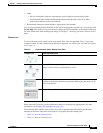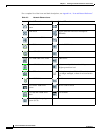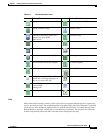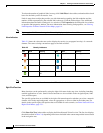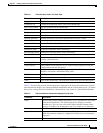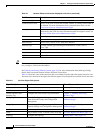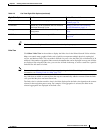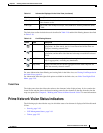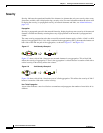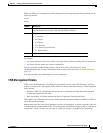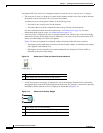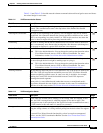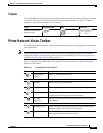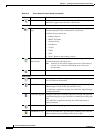
2-17
Cisco Prime Network 4.0 User Guide
OL-29343-01
Chapter 2 Working with the Prime Network Vision Client
Prime Network Vision Status Indicators
The links view toolbar includes the tools described in Table 2-10 and the link filtering buttons described
in Table 2-10.
For more information about filtering and sorting links in the links view, see Viewing Link Properties in
the Links View, page 6-8.
For information about the right-click options available in the links view, see Links View Right-Click
Menu, page 2-39.
Ticket Pane
The ticket pane shows the tickets that relate to the elements in the displayed map. It also contains the
Latest Events tab that shows the latest incoming events for the elements in the map from the time the
map was opened. See Chapter 9, “Working with Tickets in Prime Network Vision” for more information.
Prime Network Vision Status Indicators
The following topics describe the ways in which the status of an element is displayed in Prime Network
Vision:
• Severity, page 2-18
• VNE Management States, page 2-19
• Tickets, page 2-23
Z End-Point Element or site that is the destination of the link as a hyperlink to the inventory
of the element or site.
Link Type Type of link, such as Physical Layer, LAG, MPLS TE Tunnel, pseudowire (PW)
or VPN.
Table 2-9 Information Displayed in the Links View (continued)
Field Name Description
Table 2-10 Link Filtering Buttons
Button Name Description
All Links Displays the complete list of links for the selected context (map or
aggregation). In other words, the list is not filtered and all the links are
displayed, including external links.
External Links Displays links with only one side of the link in this context (map or
aggregation) and the other side either not in the map or outside the selected
context.
Flat Links Displays the links currently visible on the map for the selected context
(map or aggregation), excluding any thumbnails.
Deep Links Displays the links for the current aggregation where both endpoints are
within the currently selected context.



